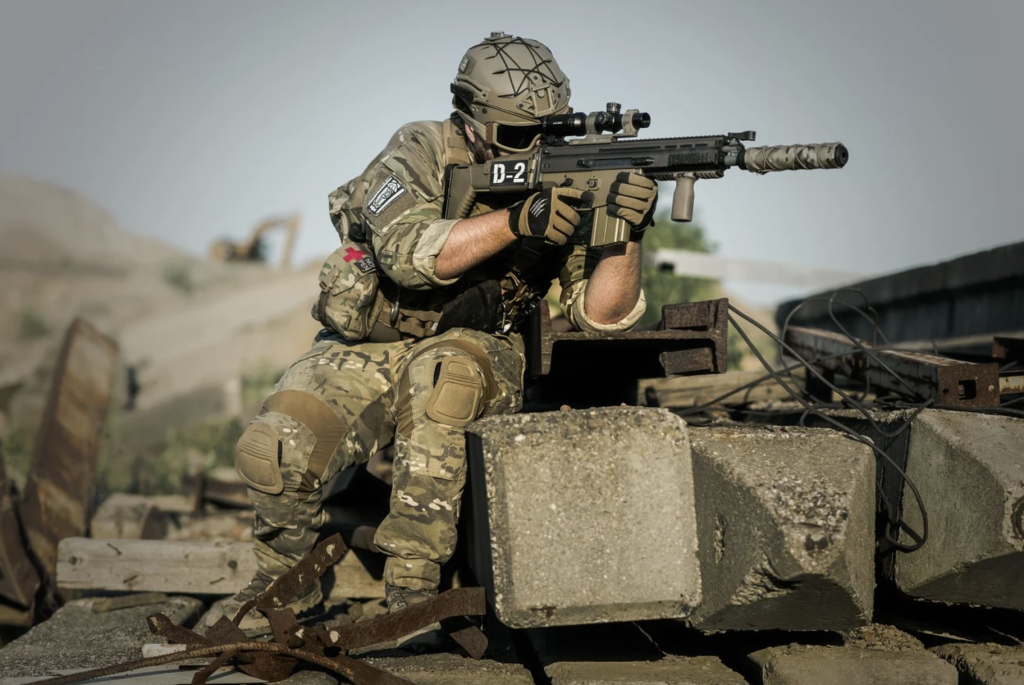
“Every age has its own kind of war, its own limiting conditions, and its own peculiar preconceptions.”
—Carl von Clausewitz
Hybrid war is a way of waging a comprehensive conflict against an adversary. Nation states try to use cyber technology, information, overt and covert means of intelligence apparatus, economic and diplomatic channels, and irregular armies. The aim is to subvert the enemy’s decision making, confuse it and maximize one’s own strategic gains.
The term ‘hybrid war’ was coined by western analysts after the Russian annexation of Crimea in 2014. Military Balance (2015) defines it as “the use of military and non-military tools in an integrated campaign, designed to achieve surprise, seize the initiative and gain psychological as well as physical advantages utilizing diplomatic means; sophisticated and rapid information, electronic and cyber operations; covert and occasionally overt military and intelligence action; and economic pressure”.
Hybrid war is often short of conventional war, yet a state can compel an adversary state to accept a dictated solution. The salient strategic goals of hybrid efforts are to erode economic strength; undermine the legitimacy of key institutions such as governance bodies, political leadership and diplomatic entities while encouraging social discord; and weaken the bonds between the state and the people. The techniques employed in a hybrid war are such that they create an effect short of war, and the adversary cannot retaliate due to the absence of legitimacy for a military attack.
Technological advancements always remain an impetus for advancement in war-fighting capabilities. The first generation of warfare was characterized by simple line and column tactics and a smoothbore musket, where battles fought were rigid and orderly. Many practices of that generation are still in practice, such as the chain of command, uniforms distinguishing civil from military, military discipline and marching drills. The second generation changes were driven by technology in the form of rifled muskets, machine guns and artillery fire. Tactics in this warfare generation include trench warfare with fire and movement, with the aim of attempting attrition of enemy forces. The third generation of warfare emerged with the growing prominence of armored vehicles. The emphasis was on speed, the element of surprise and dislocating the enemy from behind. The German idea of the blitzkrieg in WWII formed the essence of maneuver warfare.
In the fourth generation, the monopoly of a state on waging war was diminished. Due to technological advancements like the internet and die-hard mercenaries, state and non-state actors are equally poised to combat each other in the physical and ideological battlefields. The information revolution has resulted in a diffusion of power. Information operations have always been important, but the pervasiveness of ICTs has augmented the flow of information; consequently, the world has contracted into a global village. Entry into the information domain is now relatively easy, providing leverage to non-state actors for operating in the information domain with ease.
Pakistan faces continued threats from its eastern neighbor. Since Pakistan’s inception, India has worked to overtly and often covertly destabilize Pakistan. In 1971, the separation of East Pakistan was the result of hybrid operations by India in collusion with the Mukti Bahini insurgents.
Hybrid operations have become more lethal and pervasive due to advancement in technologies such as the internet and social media. Lethal cyber-attacks, with the magnitude of military weapons, are being launched by belligerents. Now the outreach of hybrid operations is far deeper and detrimental. The national leadership is cognizant of these challenges. On 14th April 2018, while addressing graduating cadets at PMA, the Chief of Army Staff acknowledged that hybrid war is waged against a country to discredit its leadership. False news is propagated to sow differences between state institutions and the people of the country.
Due to its geopolitical importance, Pakistan is subject to multiple grey zone threats. Through constant propaganda campaigns, the enemy is trying to portray Pakistan as a state which is responsible for sponsoring militancy in the region. A discriminatory attitude was observed in the FATF where, despite fulfilling most of the conditions, Pakistan still remains on the grey list. Now after the 15th August takeover of the Taliban in Kabul this year, even the failure of former President Ghani’s government in Afghanistan is being attributed to Pakistan. Despite acting as facilitator of peace in Afghanistan, Pakistan is being pursued for doing more and is being scapegoated. At the UNGA, Prime Minister Modi of India blamed Pakistan for encouraging regressive thinking and tried to gain sympathy, blatantly ignoring the fact that Indian Occupied Kashmir has been under siege since 5th August 2019.
Terrorist attacks to subvert economic growth are also employed. Law enforcement agencies and the people of Pakistan have bravely faced the monster of terrorism. Although the country has successfully controlled the spread of terrorism as a systematic campaign, discrete efforts by terrorist sleeper cells remind us to maintain continuous vigilance against these elements.
Recently, the New Zealand cricket team unceremoniously abandoned their tour on the pretext of a threat alert. This resulted in a discourse about Pakistan’s isolation at the international level. Domestic agencies were successful in tracing the origins of the fake advisory to New Zealand authorities. This issue should be taken to proper forum to avert such incidents in future.
Propaganda in the form of fake news is central to hybrid war. National institutions and the leadership are being maligned to discredit them. Different projects such as the CPEC are under attack as well and people are being instigated to make these projects contentious.
In the cyber domain, the country observed cyber-attacks against the national leadership and institutions such as NADRA and FBR. These incidents remind us that cyber security has severe implications for national security and such systems / targets should be well protected.
Pakistan is a leading food producing country, currently the seventh largest producer of wheat in the world. However, price hikes and inflation are also emerging threats which can sow discord between the state and its people if not resolved in a timely manner. The Ehsaas flagship program is a step in right direction. However, efforts should be made to expand such programs, preferably beyond political divisions.
Pakistan should not go too far beyond in advocating legitimacy for the Taliban as the world is still observing the actions of the new regime in Kabul. Adversaries of Pakistan can exploit this situation and its exit from grey list might be delayed further.
To succeed in this emerging domain of hybrid war, it is necessary that there should be a national narrative beyond political, ethnic and religious segmentation. ‘Pride of the country, prestige of the nation’should be foremost objective. To achieve this, all segments of society should converge and a wholesome response by the nation will help to counter hybrid threats.
![]()




Be the first to comment